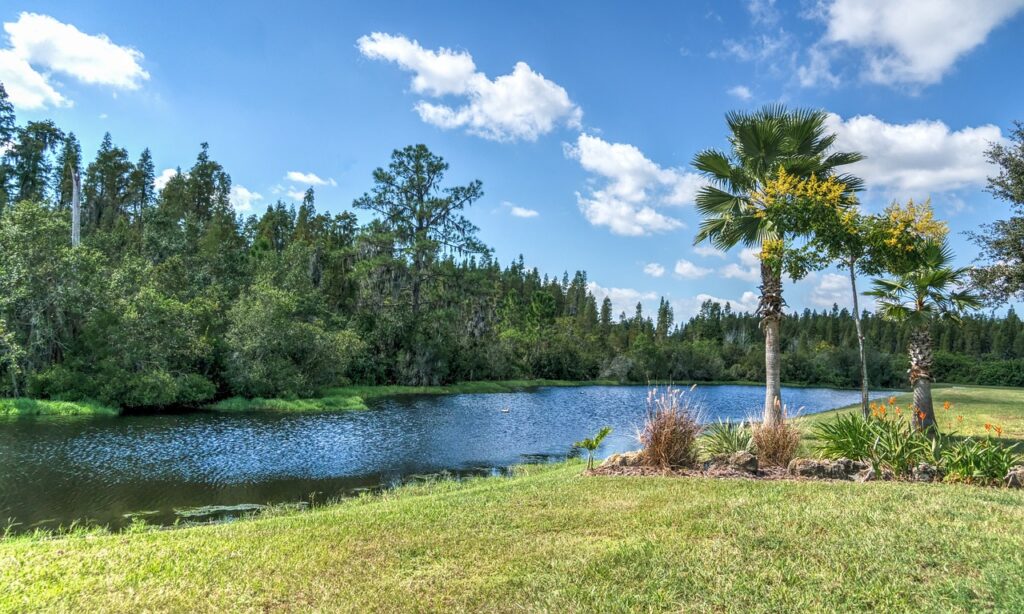Winter (December – February); Mild and Pleasant
Florida has a warm, sunny climate, attracting many tourists and residents. The weather changes throughout the year due to its subtropical and tropical climate zones. Southern Florida has a tropical climate, while central and northern areas have a humid sub-tropical climate. The state experiences four seasons, Winter (December February), Spring (March –May), Summer (June – August), and Fall (September November). Each season brings different temperatures, humidity levels, and rainfall. Winters are mild and cool weather. Florida’s changing climate makes it a unique place to visit and live.
Florida’s winter attracts many visitors looking for warm and pleasant weather. Unlike northern states with cold and snowy winters, Florida stays mild and comfortable. Temperatures vary by region, with southern cities like Miami staying warmer than northern areas like Jacksonville and Tallahassee. In south Florida, daytime temperatures range from 65 Fahrenheit to 80 Fahrenheit, and night’s stay above 50 Fahrenheit. Central Florida, including Orlando and Tampa, has temperatures between 55 Fahrenheit and 75fahrenheit. north Florida is cooler, with temperatures from 40fahrenheit to 70 Fahrenheit, and sometimes experiences frost. Winter is Florida’s dry season, meaning low humidity and little rain. The skies are mostly clear, with plenty of sunshine. This makes it a great time for outdoor activities like golfing, hiking, and going to the beach. Snow is extremely rare, but frost can occur in the northern areas. The mild winter weather makes Florida a popular destination for tourists escaping the cold in northern states. Many visitors come to enjoy the sunshine and outdoor fun during this season.

Spring (March – May); warming up and blooming
Spring in Florida is a time of change, with rising temperatures and increasing humidity. March is still mild, with temperatures between 60 Fahrenheit and 80fahrenheit to across the state. By April and May, temperatures get warmer, and south Florida often reaches 85 Fahrenheit or more. Rainfall is low in early spring but increases by May, marking the start of the wet season. The days are sunnier, and flowers begin to bloom, making it a great time for nature lovers. Humidity also rises, especially in late spring, but it is still more comfortable than the hot summer months.
Spring is one of the best times to visit Florida. The weather is warm but not too hot, making it perfect for theme parks, beaches, and outdoor festivals. However, spring break in March and April brings large crowds, especially in popular places like Miami, Orlando, and the Florida Keys. Despite the busy tourist season, spring offers beautiful weather and plenty of outdoor activities for visitors and residents alike.

Summer (June – August); Hot, Humid, and Stormy
Florida’s summer is very hot, humid, and rainy. Temperatures often go above 90 Fahrenheit. High humidity makes it feel even hotter. In south Florida, the heat index can reach over 100 Fahrenheit. This makes the air feel heavy and uncomfortable. Summer is also Florida’s wet season. Almost every afternoon, there are quick but strong thunderstorms. These storms bring heavy rain, lightning, and strong winds. Coastal areas get cooling sea breezes. Inland areas feel much hotter because there is less wind. July and august have the most rain, sometimes over 7 inches per month. Hurricane season starts on June 1 and lasts until November 30. The biggest storms usually come in late summer or early fall. However, tropical storms can happen anytime during the season. People near the coast must watch for storm warnings. Even with the heat and rain, summer is a busy time. Many people visit the beach, swim, and enjoy water sports. Theme parks are also crowded. Florida has many natural springs, lakes, and water parks where people cool off. Outdoor activities are best in the morning or evening when it is not as hot. Summer in Florida can be extreme, but it is still a fun and exciting season.
Fall (September November); cooling down and storm risks.
Fall in Florida is a time of change. The summer heat slowly fades. September still feels hot, with temperatures in the upper 80fahrnheit. Humidity remains high. By October and November, it gets cooler. Temperatures range from 65 Fahrenheit to 80 Fahrenheit. early fall is still rainy. September b rings a high chance of storms. It is the peak of hurricane season. This month has the most tropical storms and hurricanes. By mid-October, storms become less common. The weather starts to dry out. November nights are cooler. In northern Florida, temperatures sometimes drop to 50 Fahrenheit or lower. Humidity decrease, making the air feel fresh. Outdoor activities become more pleasant. People enjoy hiking, fishing, and visiting parks. The crowds also get smaller. Fall is also a time for fun events. Halloween festivals, food fairs, and outdoor concerts happen across the state. The weather is perfect for exploring. Warm days and cool evenings make it one of the best times to visit Florida. There is no extreme heat, just comfortable fall weather. Florida’s weather changes throughout the year. Each season offers something different. Winter is mild and dry. It is great for outdoor activities. Spring brings warmer temperatures. Flowers start to bloom, and the state looks beautiful. Summer is very hot and humid. There are frequent thunderstorms. It is also hurricane season, so storms can be strong. Fall starts with stormy weather. By November, it becomes cooler and more comfortable. No matter the season, Florida has something for everyone. Some people love the hot, sunny beaches in summer. Others enjoy the cooler breezes in winter. Knowing Florida’s seasons helps visitors plan better trips. Every month brings different weather, so it is good to be prepared. Florida’s climate makes it a great place to visit all year.


